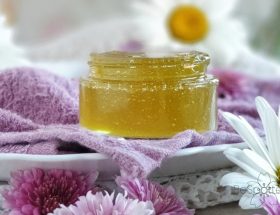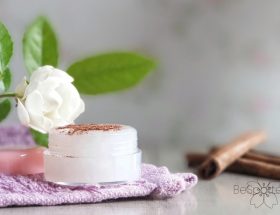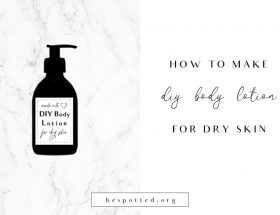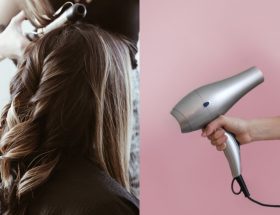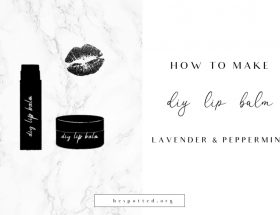This post may contain affiliate links. Any sales made through such links will reward me a small commission – at no extra cost for you!
Dry body brushing is a centuries-old beauty ritual that’s got quite an attention in the last couple of years. It’s been praised amongst holistic estheticians, influencers and celebrities, such as Miranda Kerr and Gwyneth Paltrow, alike.
And there is a good reason why this simple and quite inexpensive method is suddenly amongst many’s most treasured beauty treatments. Dry brushing is an excellent way to exfoliate your skin, make it soft and smooth and get the fluids move around.
Sadly, many popular claims about the dry brushing benefits for skin, health and even its cellulite treatment abilities seem to be significantly overblown. But the good news is that the treatment, when done right, is quite safe to incorporate into your everyday body care routine, with only a few exceptions.
So, if you too are considering trying out this method for yourself, you surely have many questions, such as what does dry brushing do, what it can and cannot help you treat, what are the benefits of dry body brushing and how to safely do it at home…
What Is Dry Body Brushing?
Dry brushing or dry body brushing is a method of exfoliating massage during which you use a body brush to remove the dead skin cells from your skin’s surface. Unlike your regular scrub, dry brushing is performed, as its name suggests, on a dry skin.
The goal is to remove as much of the dead, dry skin cells as possible without overly upsetting or hurting your skin. But the important thing to note is that there is a method to dry brushing – you can’t just pick up a first brush your find and start scrubbing in each and every direction.
For this technique to give optimal results, you will need a brush preferably with natural bristles that shouldn’t be too harsh or stiff. You will also have to find the right balance between being energetic enough for the treatment to be effective, but also gentle enough so that you don’t irritate your skin.
As we’ll explain in a minute, all the strokes are typically preformed towards the heart and repeated a few times over each area. After the dry body brushing session, some redness is to be expected, but it should come from increased blood circulation, not from skin irritation.
Dry Brushing Benefits
Though the dry brushing method is surrounded by lots of anecdotal claims, there’s practically no formal scientific evidence to confirm its many alleged health and beauty benefits. However, experts agree that some of the benefits of dry body brushing are evident. These include:
- Exfoliation
Dead skin cell removal is one of the most obvious and noticeable dry brushing benefits. Similarly to body scrubs, body brush can help you get rid of the dull, dry skin and get a smoother, healthier complexion. Exfoliation also encourages the skin to renew itself.
- It improves the skin’s overall condition
Regular exfoliation keeps the pores clean and with time it can even help reduce the appearance of skin imperfections such as dark spots and sun damage. You will notice your skin becoming smoother and plumper. It will also absorb better whatever body moisturizer you apply after the session.
- Dry brushing stimulates circulation
The repeated movements of brush bristles over the skin stimulate blood flow in those areas. This temporarily increases the radiance and youthful appearance of the skin.
Some also claim that dry body brushing could encourage lymphatic drainage, but so far there is no enough research data to support this.
- It is energizing
Probably because it stimulates blood flow, but most people feel a natural boost of energy after the dry body brushing treatment. That is why it is often recommended to include this step in your morning routine rather than at night.
- It feels good
Just like massage, dry brushing feels invigorating. Repeated gentle strokes of brush over the skin feel good, which makes this technique a great self-care step.
How to Dry Brush Your Skin
How to perform dry brushing at your own home? Here’s a few steps and points to keep in mind…
- To begin, take off your clothes and make sure your skin is completely dry. (Although, some people like to put a bit of oil on the brush.) It would be best to dry brush before the shower, so you can wash off all the exfoliated skin right after the treatment.
- Follow the circulatory system with your brush. Starting at your feet, move upwards section by section until you cover your whole legs and all the way to the small of your back.
- Then exfoliate your arms, also from hands and towards the heart. Be extra careful while brushing the skin under your upper arms and any areas with lymph nodes.
- You can brush your stomach in long upward or circular strokes.
- To treat your neck and décolletage, start at the jawline and move downward. Be even gentler in these areas, as the skin on your chest and stomach is very delicate.
- Stroke each area 2 – 10 times. The pressure should be slightly firm, just energetic enough to feel good without hurting your skin. Your movements should be long, smooth and rhythmic, and you can switch to shorter, quicker strokes around smaller areas, bends and joints.
- After the dry body brushing, take a shower to wash off everything. Be gentle and skip your scrub, loofah and anything abrasive. Apply a lotion or a body oil while your skin is still slightly damp.
- Repeat the process as often as your skin allows you to in order to see any real results. Some people can dry brush every day, while those with more sensitive skin should stick to brushing once or twice a week.
Dry Brushing Side Effects and Possible Drawbacks
Dry body brushing is a relatively safe technique most people can enjoy. However, by doing it too often, applying too much pressure or using too harsh a body brush, there is a possibility that you irritate your skin or make it feel dry.
If your skin is on the sensitive side, you should either be super careful when dry brushing or skip it altogether. And you should never use this method over wounds, sunburns, rashes, eczema, psoriasis and irritated skin.
Another drawback would be that body brushing definitely can’t do everything the anecdotal evidence suggests it can. We primarily talk about the claims that it can stimulate the lymphatic system or aid digestion. And, though skin swelling temporarily can reduce its appearance, brushing can’t truly help reduce cellulite in any lasting way.
Also, sometimes people use the term “detoxifying” too freely. And unfortunately, many experts agree that dry brushing is one of the cases where such claims are unsupported.
Conclusion
With all we talked about in mind, is dry body brushing even worth your time? Should you bother giving it a go?
Well, that depends on what are you hoping to accomplish with it. If you want to dry brush your skin to make it softer and smoother, or because it just feels so good, then there you go. Those are both excellent reasons to take a few minutes before your shower and give your body a thorough (but gentle) brush.
Dry brushing is definitely not a miracle worker and you’ll hardly hear dermatologists recommend it as a medical treatment for any serious problem any time soon. But, not everything needs to be a multipurpose overachiever.
This treatment is easy and moderately efficient. It doesn’t require much of your time or investment, and it definitely has its perks. All in all, it’s really not a bad way to exfoliate your skin and give it some temporary glow.











